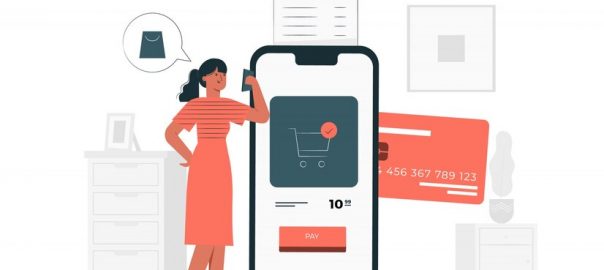In the contemporary digital era, the process of making payments has undergone a profound transformation. Digital payment solutions have revolutionized the way we transact, making it faster, more convenient, and more secure. This blog post explores the latest trends in digital payment solutions, their benefits, security considerations, and their role in streamlining transactions while ensuring enhanced security and compliance with regulatory requirements.
The Rise of Digital Payment Solutions:
Digital payment solutions refer to the methods and technologies used to make electronic transactions without the need for physical cash or traditional payment methods. These solutions encompass a range of options, including mobile wallets, online banking transfers, contactless payments, and cryptocurrencies. The adoption of digital payment solutions has been on the rise due to their convenience, speed, and the increasing digitalization of commerce.
Benefits of Digital Payment Solutions:
1. Convenience:
Digital payment solutions eliminate the need for carrying cash or physical cards, allowing users to make transactions anytime, anywhere using their smartphones or other digital devices.
2. Speed and Efficiency:
With digital payments, transactions can be completed in seconds, enabling faster and more efficient commerce. This benefits both businesses and customers by reducing waiting times and improving overall transactional efficiency.
3. Enhanced Security:
Digital payment solutions often employ robust security measures, such as encryption and tokenization, to protect sensitive payment information. This provides a higher level of security compared to traditional payment methods, reducing the risk of fraud and unauthorized access.
4. Accessibility and Inclusion:
Digital payment solutions promote financial inclusion by providing access to banking services for individuals who may not have easy access to traditional banking services. They enable people to participate in the digital economy and make transactions electronically, regardless of their location or socioeconomic status.
Payment Orchestration:
Payment orchestration acts as a central hub that connects various payment methods and providers, streamlining the payment process for businesses. It helps manage multiple payment channels, currencies, and technologies in a unified manner. It includes several key points such as:
- Payment Fragmentation: With the rise of digital commerce, businesses are faced with numerous payment options and providers, leading to “Payment fragmentation”. This fragmentation can make it challenging for businesses to manage and optimize their payment processes effectively.
- Benefits of Payment Orchestration: By implementing payment orchestration, businesses can enjoy several benefits. It enables them to expand their reach to a wider customer base by offering diverse payment options. Additionally, it improves transaction success rates, reduces payment processing costs, and enhances the overall customer experience.
- Building Blocks of Payment Orchestration: It contributes to a successful payment orchestration strategy. These include payment gateways, acquirers, fraud prevention systems, alternative payment methods, and reconciliation tools. Each building block plays a crucial role in ensuring a seamless payment process.
- Flexibility and Scalability: Payment orchestration provides businesses with the flexibility to adapt to changing customer preferences and market trends. It allows them to easily integrate new payment methods and providers as they emerge. Moreover, it offers scalability, accommodating business growth without disrupting existing payment operations.
- Optimization and Analytics: Payment orchestration platforms often offer robust analytics and reporting features. These insights help businesses monitor transaction performance, identify bottlenecks, and make data-driven decisions to optimize their payment processes.
- Integration with Existing Systems: Payment orchestration solutions are designed to integrate seamlessly with existing business systems, such as e-commerce platforms, point-of-sale (POS) systems, and customer relationship management (CRM) tools. This integration ensures a cohesive and efficient payment experience for both businesses and customers.
Security Considerations:
As more individuals and businesses embrace digital payment methods, it is essential to understand the security considerations associated with these transactions. We explore the various security considerations in digital payment systems and highlight the importance of implementing robust security measures to safeguard sensitive financial information.
- Encryption: Digital payment solutions employ encryption techniques to secure data transmission, ensuring that sensitive information, such as payment details, remains encrypted and protected from unauthorized access.
- Tokenization: Tokenization replaces sensitive payment data with unique tokens, reducing the risk of data breaches. These tokens cannot be used to extract sensitive information, making transactions more secure.
- Two-Factor Authentication (2FA): Many digital payment solutions implement 2FA, requiring users to provide an additional layer of authentication, such as a fingerprint or a one-time password, to verify their identity and authorize transactions.
- Fraud Detection and Prevention: Digital payment providers employ sophisticated fraud detection systems that analyze transaction patterns, identify suspicious activities, and prevent fraudulent transactions from occurring.
Streamlining Transactions:
Digital payment solutions streamline transactions by simplifying the payment process. Instead of manually entering card details or writing checks, users can make payments with just a few taps on their smartphones or by scanning a QR code. This eliminates the need for physical contact, reduces human errors, and speeds up the overall transaction process.
Enhancing Security:
Digital payment solutions continually evolve to enhance security measures. Biometric authentication, such as fingerprint or facial recognition, adds an additional layer of security by ensuring that only authorized individuals can access and authorize transactions. Furthermore, transaction alerts and real-time monitoring systems notify users of any suspicious activity, allowing them to take immediate action.
Meeting Regulatory Requirements:
Digital payment solutions must adhere to regulatory frameworks to ensure compliance and protect both businesses and customers. These frameworks include anti-money laundering (AML) regulations, data privacy laws, and industry-specific regulations. Payment service providers are responsible for implementing measures to meet these requirements, such as data encryption, customer data protection, and transaction monitoring.
Conclusion:
Digital payment solutions have transformed the way we transact by offering convenience, speed, and enhanced security. These solutions streamline transactions, making them more efficient and accessible to a wider audience.
In digital payments, Mindfire Solutions is a standout software development partner. Renowned for innovation, their expert team delivers cutting-edge, customized fintech solutions for seamless and secure digital payments. From mobile integrations to e-commerce platforms, Mindfire ensures your business stays ahead in the ever-evolving fintech landscape.
